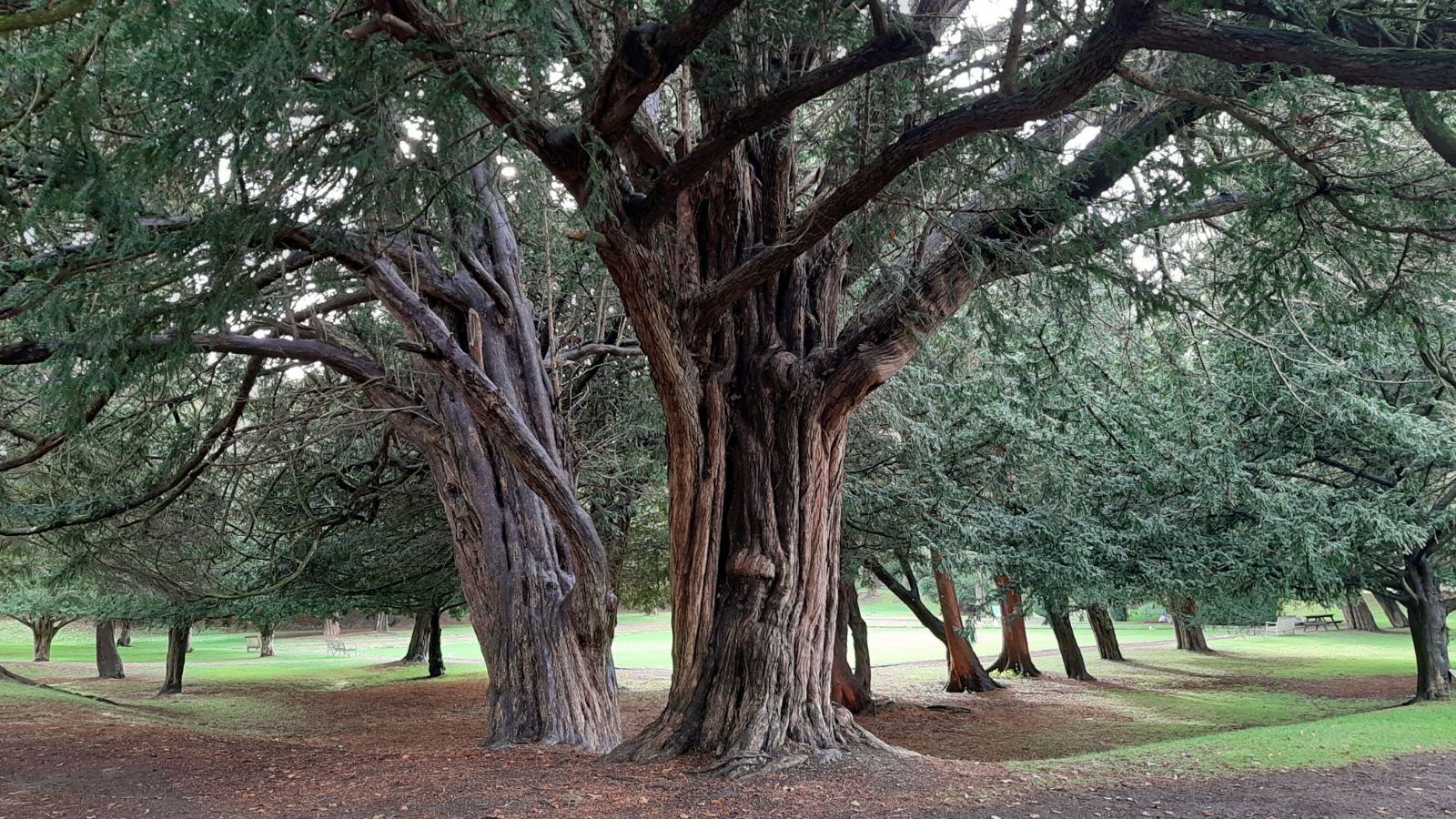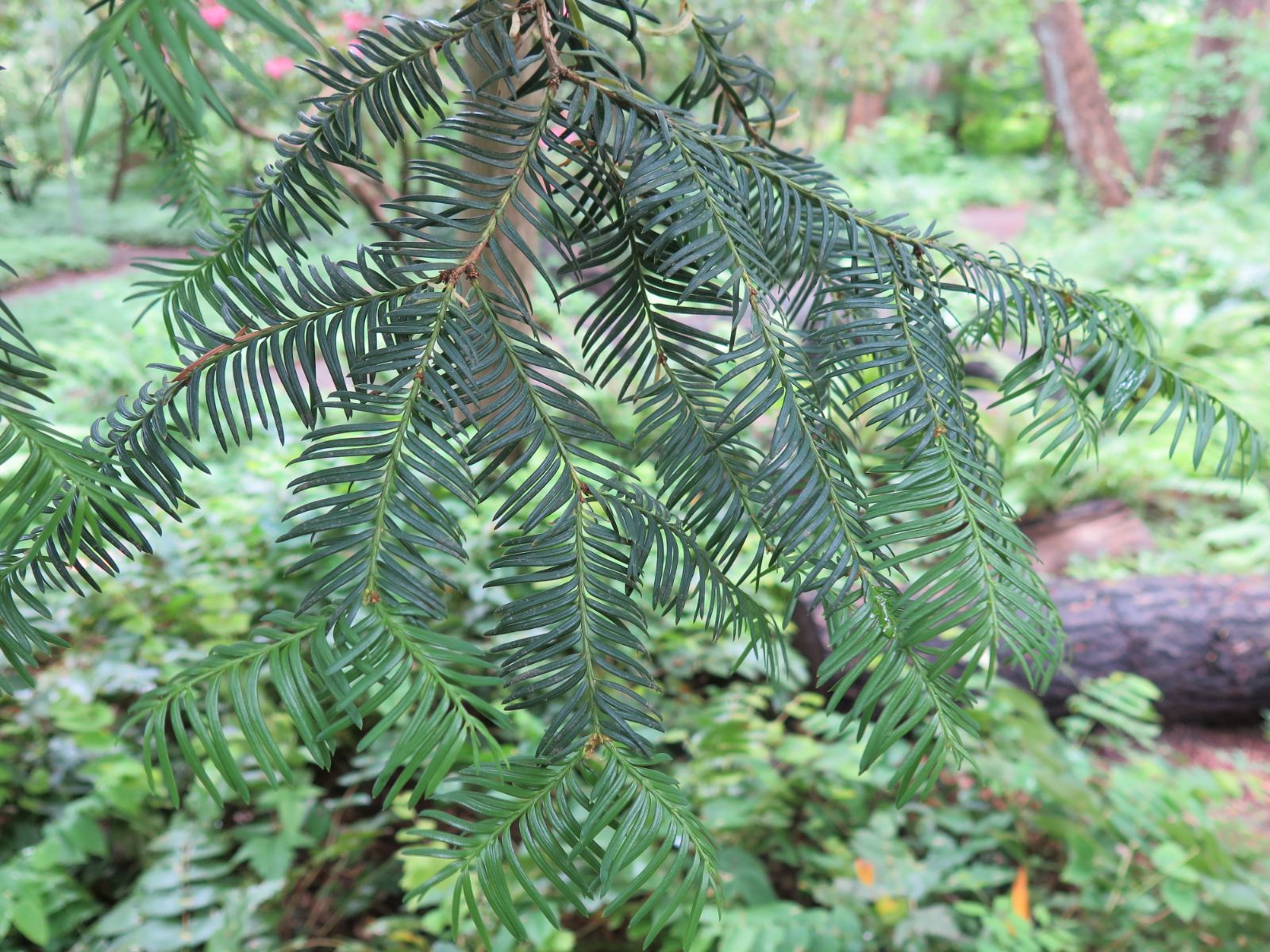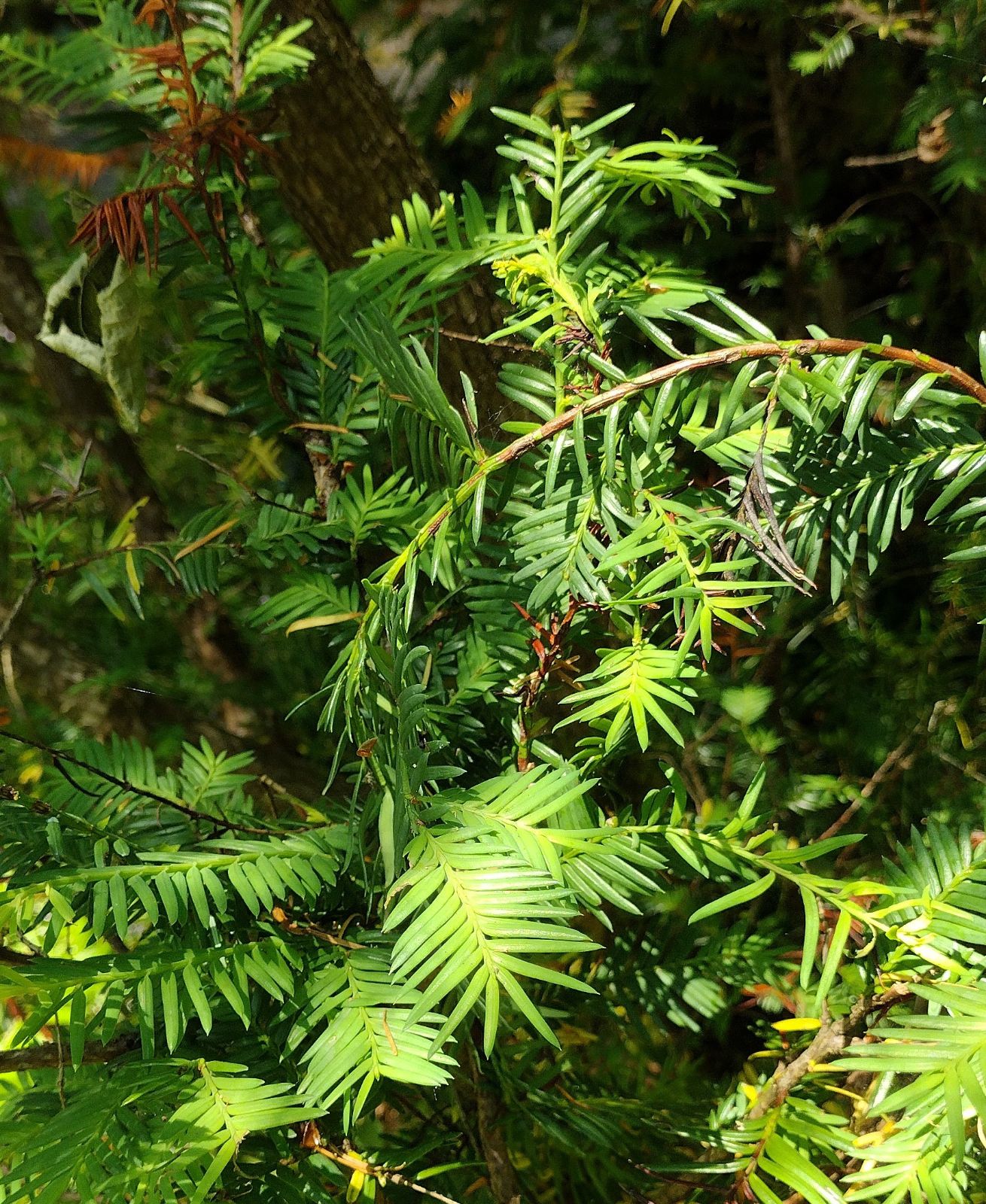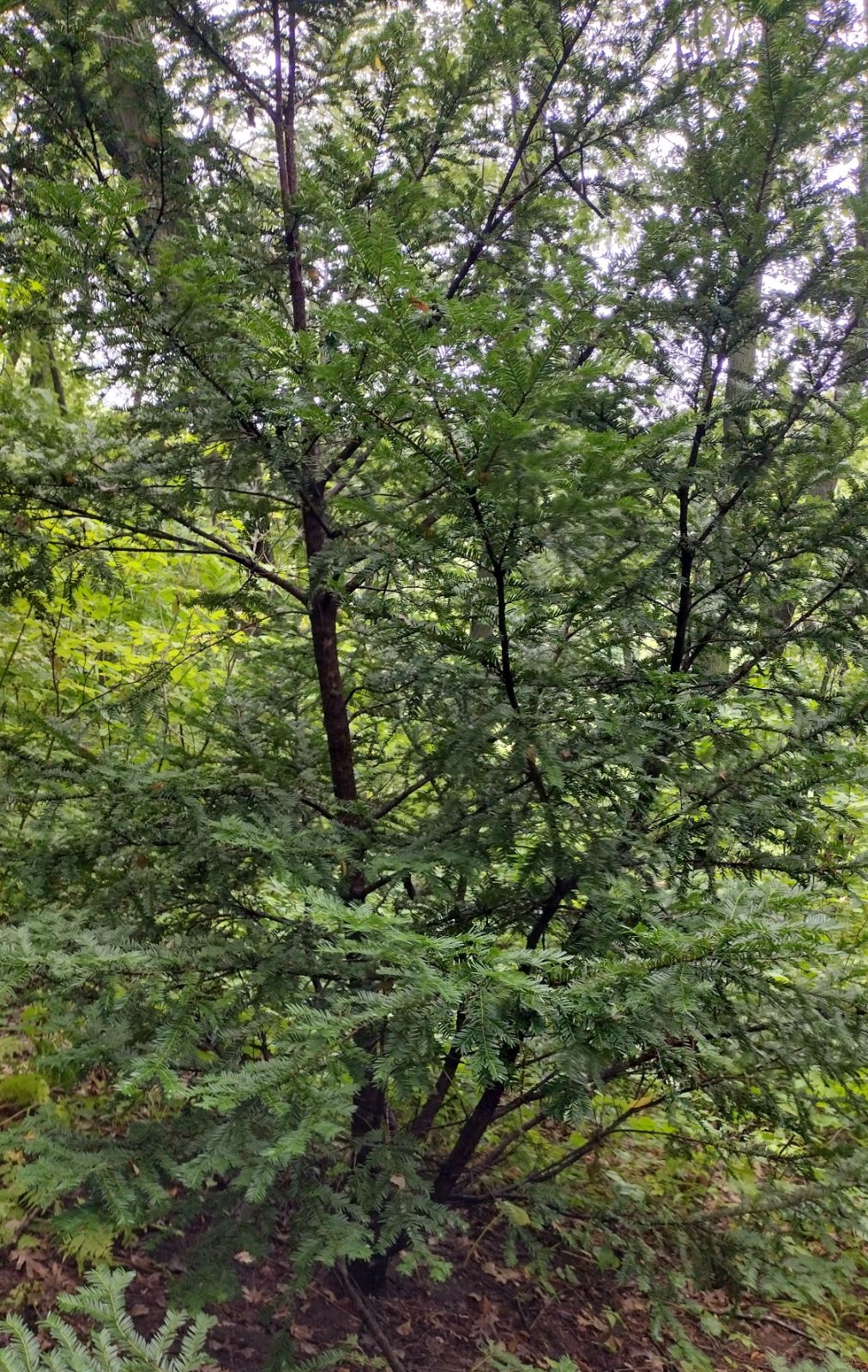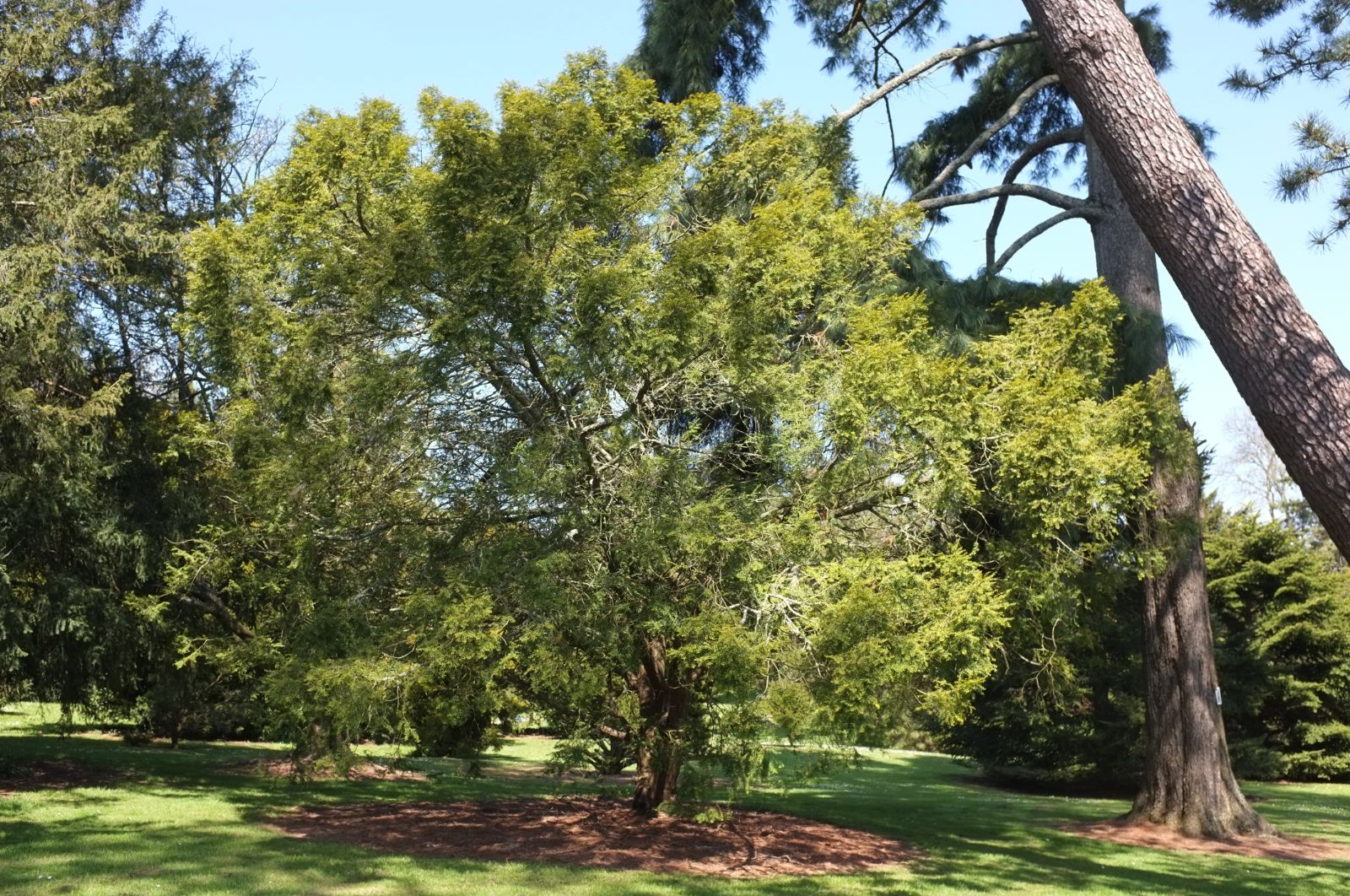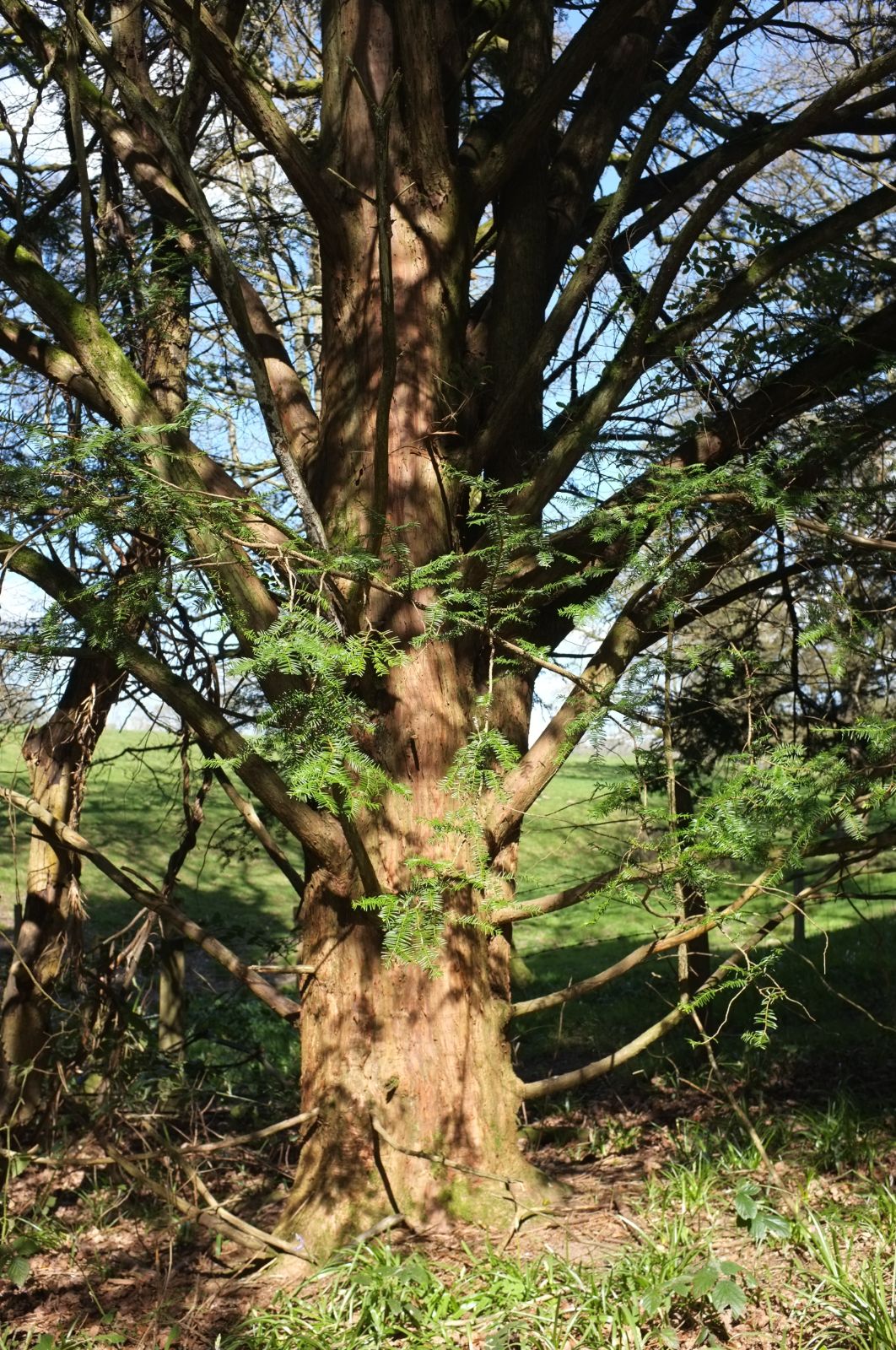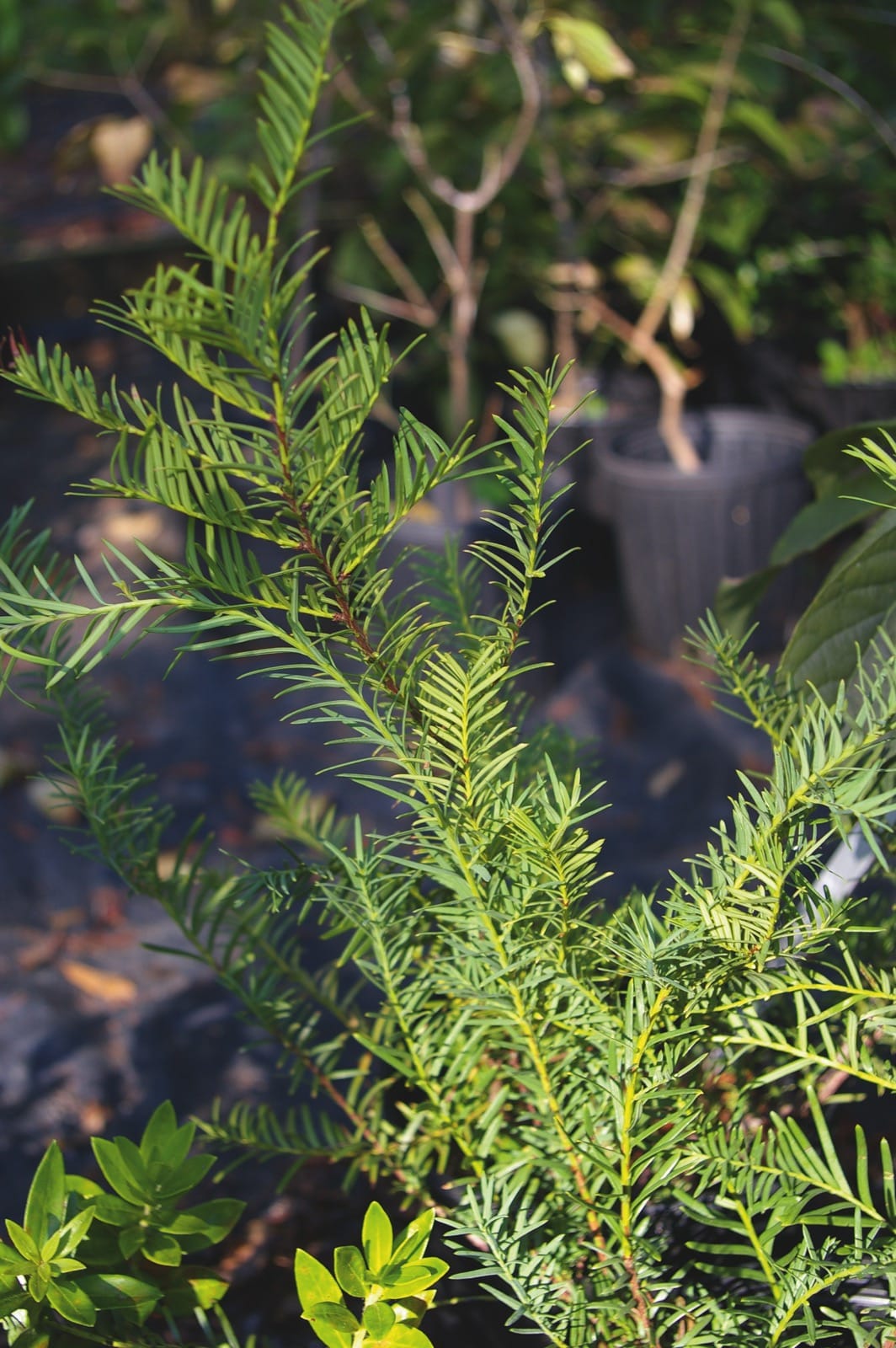Taxus
Sponsor
Kindly sponsored by
This genus has been sponsored and new text is being prepared.
Credits
Article from Bean's Trees and Shrubs Hardy in the British Isles
Article from New Trees by John Grimshaw & Ross Bayton
Recommended citation
'Taxus' from the website Trees and Shrubs Online (treesandshrubsonline.
Family
- Taxaceae
Common Names
- Yews
Editorial Note
We are delighted to have recently received sponsorship to enable the account of Taxus to be updated. Work will start later this year and is expected to take at least 12 months to complete. Trees and Shrubs Online relies on generous donations to meet its core costs, and sponsorship to enable new text to be researched, written, edited and published. The project is indebted to the many individuals, organisations and charities that have contributed generously to our aim of disseminating new, high-quality information for free, for everyone.
The TSO team is keen to hear from anybody interested in supporting our ongoing work. We are particularly keen to secure funding to update the Japanese maples and to provide urgently-needed accounts of up-and-coming genera such as Lagerstroemia, Loropetalum and Heptapleurum (Schefflera) for which very little information is currently available to gardeners. To enquire about sponsorship opportunities please write to editor@treesandshrubsonline.org
TC, April 2024
Taxus are evergreen trees and shrubs with reddish brown, flaky bark. They are typically dioecious, though the shrubby T. canadensis is monoecious. The branchlets are irregularly alternate, greenish yellow when young, reddish brown later. The leaves are flexible, two-ranked, sessile or shortly petiolate, the stomata in two pale-coloured strips on the lower surface. Both male and female cones are solitary and axillary; the male (pollen) cones globose, pedunculate, with 6–14 microsporophylls; the female (seed-bearing) structures (cf. cones) subsessile, bearing several overlapping bracts at the base, with one ovule per structure. The ovule is partially enclosed in a red or orange (yellow in some cultivars) fleshy aril, open at the apex (Hils 1993, Fu et al. 1999d).
The taxonomy of Taxus has always been and remains challenging (death may be certain – Taxus is anything but), and recently renewed medicinal interest in the genus (see below) has brought forth a number of new species and systematic interpretations. The number of recognised species varies widely from one account to another, largely due to the relative paucity of gross morphological characters by which taxa can be delimited. Taxus species are currently defined largely by geography, and most cultivated yews can be identified with certainty only when their provenance is known. Farjon (2001) recognises 10 species, but given the difficulty in separating even these there is some merit in following Pilger (1903), who treated all yews as subspecies of T. baccata. The extraordinary recent review by Spjut (2007), recognising 24 species and 55 subspecific taxa, is probably best ignored; it includes six newly described species, and species-level recognition for a number of horticulturally significant trees such as the Irish Yew, T. baccata ‘Fastigiata’. Recent studies of the T. wallichiana complex (Gao et al. 2007, Möller et al. 2007, Shah et al. 2008) have found some useful morphometric attributes by which to distinguish entities among Asian species, but only at the cost of measuring a lengthy suite of characters in the minutest detail.
Identification through criteria of geography is always unsatisfactory, but in Taxus it seems to be essential. In his review of the Taxaceae in cultivation, Cope (1998) noted that while most species have clearly disjunct ranges, the distributions of the Asian yews overlap. Here the characters traditionally used for identification are bud scales and leaf apices, but these are variable, any differences being very slight – only to be perceived through a detailed study of a large range of material – and even then identification is by no means certain (Möller et al. 2007). To compound the problem, there are considerable differences between dried and fresh material (Shemluck et al. 2003). There is at present no serious study setting out an opinion on comparative points of difference for all species, and trying to collate various authors’ views from a literature survey seems futile. In consequence, we feel, we can only advise horticulturists to accept names that are currently attached to plants, and, where provenance is known, ensure that it is scrupulously recorded. In view of all this, the accounts below give only minimal descriptions. (We are very non-yew.) In our notes on plants in cultivation their identification has been taken in good faith, and cross-references are given with the caution of caveat lector. It is perhaps useful to note that identification of named cultivars is also a nightmare (Dirr 1998).
Expeditions made in the early 1990s by Rob Nicholson and Melvin Shemluck were an important source of authenticated wild-origin Taxus material. Nicholson (first of the Arnold Arboretum, then Smith College Botanic Garden) and Shemluck (of Quinsigamond Community College, Massachusetts) went in search of specimens to be tested for taxol content by the National Cancer Institute (USA) and private pharmaceutical companies, and living material was propagated from each of their collections, resulting in over 300 new documented Taxus clones in cultivation. Their travels took them to many areas where yews occur, and material of many of the taxa (or should that be Taxi?) they found has been introduced to botanic garden collections.
Taxols are cancer-inhibiting compounds found in yew bark, of great importance (especially paclitaxcel) in the pharmaceutical industry. Although they can be partly synthesised artificially, they are still ex tracted from plant tissue, and overexploitation of wild trees has led to T. wallichiana becoming threatened in many parts of its range (Gao et al. 2007). Since 1995 all Asian species of Taxus have been included on CITES Appendix 2, controlling their movement around the world. In consequence it is illegal to transfer any parts of these plants across international borders without CITES certification (with the exception of cultivated specimens of the familiar T. cuspidata).
The value of yews in the landscape, in all their shades and shapes, is undisputed. In western Europe T. baccata is unrivalled, but in much of North America and continental Europe it is replaced by the hardier T. cuspidata and hybrids T. ×media (T. baccata T. cuspidata) and T. ×hunnewelliana (T. canadensis T. × cuspidata). In the southeastern United States these commoner yews do not tolerate the heat and humidity, so Asian species and the native T. floridana have been investigated for wider use (Dirr 1998). Propagation is by seed – but hybrids occur, adding to confusion – or by cuttings.
Bean’s Trees and Shrubs
Taxus
Yew
A genus of eight or nine closely allied species, distinguished one from another mainly by vegetative characters. They are natives of the more humid regions of the northern temperate zone, though one species (T. celebica) extends to just below the equator in Indonesia. They are evergreen shade-bearing trees or large shrubs, their leaves spirally arranged but appearing more or less two-ranked on all except vertical shoots. Male and female flowers usually borne on separate plants, in the leaf-axils of the previous season’s wood. Male flower a globose cluster of stamens. Female flower consisting of a solitary terminal ovule protected by a few whorls of green bracts, which resemble a growth-bud. Fruit a bony-shelled seed, enclosed in a fleshy aril, ripening the first year.
Taxus is the type of the small family Taxaceae, to which Torreya (q.v.) also belongs. The other members of the family, not treated here, are Pseudotaxus (one species in China, probably hardy), Amentotaxus (four species in China, one at least probably hardy); and Austrotaxus (one species in New Caledonia). This family was once grouped with the conifers but is now considered by most authorities to constitute a distinct Order, the Taxales. The Cephalotaxaceae and Podocarpaceae resemble the Yew family in their solitary seeds not borne in cones, but it is now held that these groups are true conifers in which the ovule-bearing scales have become much reduced or modified. Thus the woody arborescent gymnosperms cultivated out-of-doors in this country really represent three Orders of the plant kingdom: the Ginkgoales, with one family and genus; the Taxales, with one family, the Taxaceae; and the Coniferales, with five families – Pinaceae, Cupressaceae, Araucariaceae, Taxodiaceae, as well as the anomalous Podocarpaceae and Cephalotaxaceae.
From the Supplement (Vol.V)
Richard Williamson gives an interesting account of the Kingley Vale stand near Chichester, with its associated flora and fauna, in his book The Great Yew Forest (1978).
specimens: Loose, Maidstone, Kent, male, 60 × 32 ft (1984); Ulcombe, Kent, 42 × 341⁄2 ft at 5 ft (1985); Keffolds, Haslemere, Surrey, female, 48 × 29 ft (1982); Hambledon, Surrey, 60 × 323⁄4 ft (1984); Crowhurst, Surrey, partly dead, 56 × 32 ft (1984); Tandridge, Surrey, female with three stems coalesced, 64 × 35 ft at 3 ft (1984); Selborne, Hants, male, 70 × 253⁄4 ft (1984); South Hayling, Hants, 40 × 32 ft at 1 ft (1984); Tisbury, Wilts., 33 × 311⁄4 ft (1984); Church Preen, Shrops., 40 × 223⁄4 ft, iron band at 7 ft (1985); Darley Dale, Derbs., female, 56 × 273⁄4 ft at 6 in. (1984); Gresford, Gwyn., male, 50 × 273⁄4 ft (1980).
All the above grow in churchyards, except for the Keffolds tree. The following, none of them in churchyards, are notable for height: Close Walks, Midhurst, Sussex, 84 × 101⁄2 ft, 75 × 8 ft and 92 × 61⁄2 ft (1980); Pusey House, Faringdon, Berks., 75 × 71⁄4 ft (1980); Bradwell Grove, Oxon., 82 × 71⁄2 ft (1981); Wardour Old Castle, Wilts., line of eleven, three 82 ft high (1977); Tottenham House, Wilts., 85 × 141⁄2 ft, fine bole (1984); Enys, Cornwall, 75 × 91⁄2 ft (1977); Lowther Castle, Penrith, Cumb., 62 × 131⁄4 ft (1980).
f. aurea. – A golden yew at Westonbirt House, Glos., measures 52 × 8 ft (1982).
cv. ‘Dovastoniana’. – The original West Felton yew, planted 1777, measures 56 × 121⁄4 ft (1983). Some other examples are: Waddesdon House, Bucks., 16 × 51⁄4 ft (1984); Coleton Fishacre, Devon, pl. 1933, 23 × 41⁄2 ft (1984); Lillieshall, Shrops., 50 × 51⁄2 ft (1985).
cv. ‘Dovastonii Aurea’. – The name ‘Repens Aurea’ has been given to prostrate plants which were probably originally the result of propagating ‘Dovastonii Aurea’ from side-shoots.
cv. ‘Fastigiata’. – The nomenclature and history of the Irish yew is discussed by Charles Nelson in Glasra, Vol. 5, pp. 33–44 (1981).
The original tree at Florence Court, Co. Fermanagh, measures 36 × 101⁄4 ft at 2 ft, with three stems (1984). Some other examples are: Beauport, Sussex, on Golf Course, 52 × 133⁄4 ft, a remarkable size (1984); Lanhydrock House, Cornwall, 52 ft high (1985); Lostwithiel (Castle), 59 × 121⁄4 ft at ground-level (1979); Tregrehan, Cornwall, sixth in avenue, 62 ft (1979); Culzean Castle, Ayrs., Happy Valley, 62 × 103⁄4 ft at 3 ft (1984); Taymouth Castle, Perths., 56 ft (1983).
† cv. ‘Summergold’. – Foliage predominantly golden in summer, even in full sun. Semi-prostrate habit. Raised from seed in Holland, at an uncertain date.

